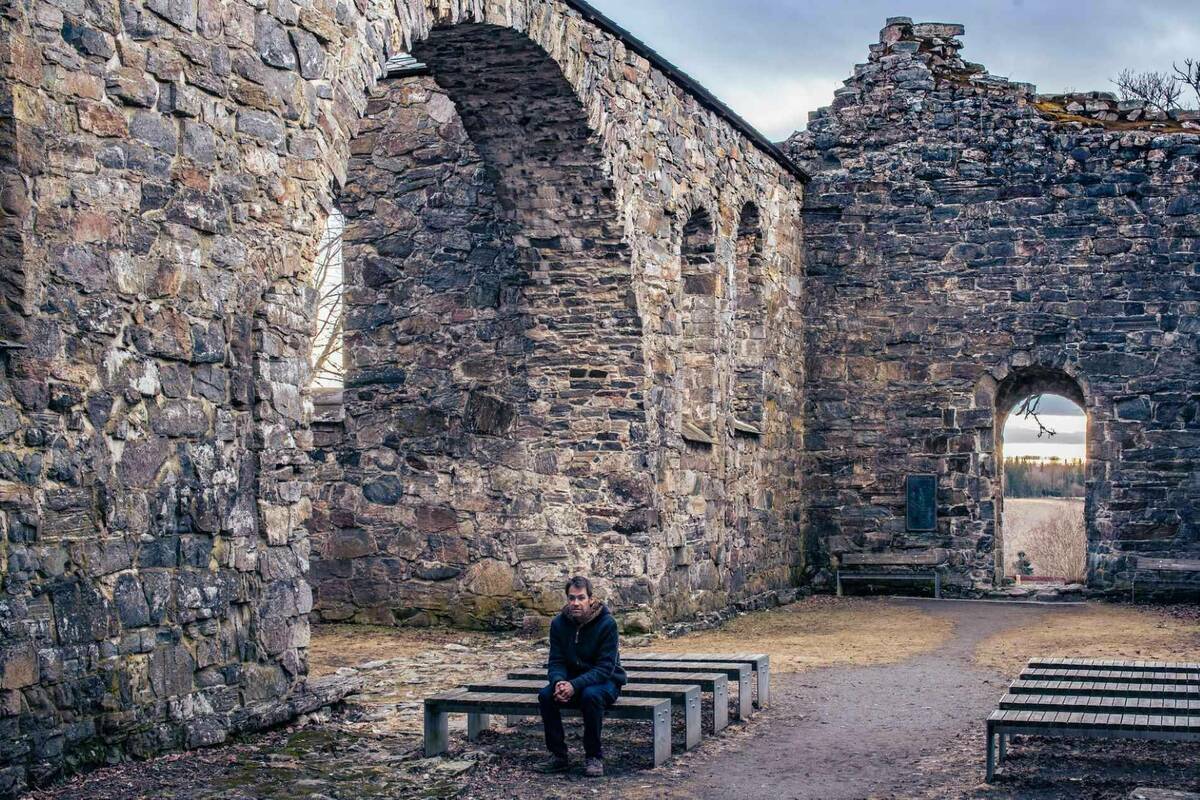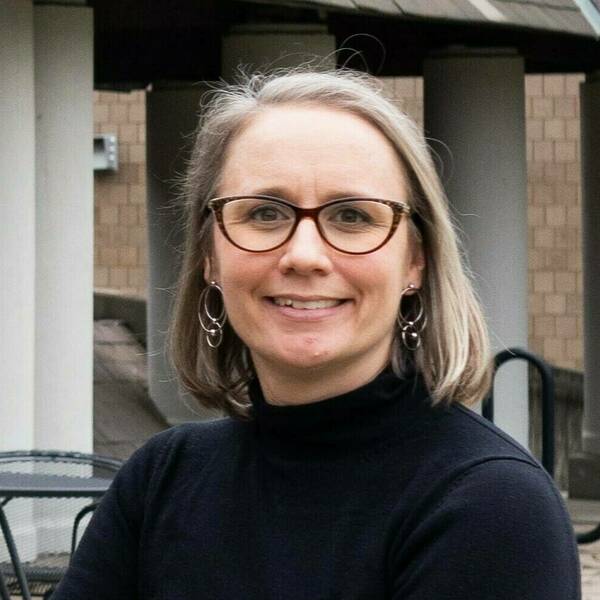The educational landscape in America is changing in a way that is difficult to keep up with. This is the conversation playing out among educators everywhere. I hear faculty talking about it in the hallways at my university. I hear it from the K–12 teachers that I interact with when offering professional development workshops. When I attend conferences, it is a frequent topic of conversation.
So, what are the phrases that emerge over and over again? “The students are different.” “Residual pandemic effects.” “Addiction to social media.” “Anxiety and depression, mental health challenges.” “Artificial intelligence and academic integrity.” Within Catholic institutions, you also hear another phrase crop up: “Disaffection and disaffiliation.”
As a Catholic faculty member at a Catholic university, I am challenged by all of this but find myself most drawn to the topic of disaffection and disaffiliation. I wonder about the links between this phenomenon and our students’ well-being and academic engagement, especially as it relates to their pursuit of knowledge, meaning, values, purpose, and Truth.
The problem of disaffiliation is not new to our post-pandemic reality. The phenomenon has been studied for decades and much has been written about this already (also see here and here). In the well-publicized 2018 publication “Going, Going, Gone: The Dynamics of Disaffiliation in Young Catholics” by the Center for Applied Research in the Apostolate and St. Mary’s Press Catholic Research Group, more than a third of millennials are disaffiliated from any religious tradition. More recent statistics with Gen Z also bear out this pattern. Aside from being alarmed at the decrease in Mass attendance in terms of what this means for the future of the Church, there are other pressing reasons why this matters. There is a link between poorer health outcomes and religious disaffiliation, which may be a contributing factor for the other problems that educators have been observing in the deterioration of well-being (spiritual and otherwise) among their students.
Many reasons have been cited for this rise in disaffiliation: distrust in authority and institutions, political polarization, weak or absent catechesis in the home, poor catechesis in general, perceptions of the institutional Church being judgmental, the rise of moral relativism, secularism, the rugged individualist spirit in American culture, the sex abuse scandal, the question of gender equity in the Church, concerns related to Church teachings about gender identity and reproductive health and much more. Certainly, all of these factors play a role. There is another factor though; one that is most interesting to me as a Catholic paleontologist: perceptions of conflict between faith and science. In the “Going, Going, Gone” study, more than a third of young adults and teens who disaffiliated from the Catholic faith cited a conflict with scientific beliefs as a somewhat or very important factor for why they left Catholicism.
The faith and science conflict may seem like a footnote compared to more attention-grabbing social and political issues. It might be brushed aside as an unfortunate misunderstanding of what the Church teaches, but this misconception is actually quite widespread in the Church and undermines how young people view Church teaching writ large. If someone thinks that the Church is teaching that science is incompatible with faith but they themselves trust the process of science, it is no wonder that young people are making the choice to disaffiliate. With that misunderstanding in place, how could both faith and science be true? Every semester I encounter students who are absolutely amazed to learn that faith and science are compatible within Catholicism, some of whom had the benefit of more than twelve years of prior Catholic education, and they are left wondering what to do with this new information. Unfortunately, I think that by this point in a young person’s life reconnection with the Church may be a difficult path and the revelation of the compatibility of faith and science is not an especially compelling reason to reconnect.
There are many reasons why this misconception about science, faith, and the Catholic church is so pervasive (most directly the mythology and misunderstanding of the nuanced Galileo affair of the sixteenth and seventeenth centuries, the introduction of models of conflict in the nineteenth century, and the influence of the evangelical young earth Creationist movement being conflated with the mainline Christian embrace of science) but those are topics for another time and have been explored extensively by others already. What I am most concerned with exploring here is the question of what we should be doing about the embedded misconceptions. I am convinced that untangling perceived conflicts of faith and science is precisely what is needed in this moment to redesign and strengthen catechetical efforts and help our young people engage in asking the big questions about life, the universe, and everything. I am also convinced that the best way to achieve this is to lead with science.
Faith and Science in the Classroom
As a Catholic paleontologist, I am particularly sensitive to instances when questions about creation, origins, and the age of the earth are misrepresented both scientifically and theologically. I wanted to explore this cultural phenomenon in the classroom. In 2009, I designed a first-year seminar course focused on the Evolution and Creationism debates, which were a hot topic in the 2000s and early 2010s. This course required students to examine the nature of science and faith traditions and explore different models of conflict and compatibility, inspired by the work of Ian Barbour, a preeminent scholar of religion and science. It was an effective course for achieving those intellectual goals, but after a few semesters of teaching this course, I found that taking a whole semester to explore just one controversial demonstration of the intersection of faith and science became tiresome. The topic also began to fade out of the cultural spotlight as our society fixated on other social issues. While the conflict between evolution and creationism still exists, these skirmishes seem almost quaint in comparison to our present post-pandemic problems.
In the ten years or so since teaching those classes, the broader perceptions of conflict between faith and science persisted and, in some ways, became more acute. In the last decade, we found ourselves facing a pandemic, worsening climate change, and a “post-truth” political moment riddled with conspiratorial thinking. Taking this into account, in the spring of 2023, I relaunched the class, this time with a broader scope. The new interdisciplinary seminar class was entitled “Exploring Scientific Controversies,” which was designed for first-year honors students. In this course, the idea was to explore the various ways to acquire knowledge, discern what was true, and understand this moment in time when many aspects of scientific knowledge in our society are being questioned, misinterpreted, manipulated, and misunderstood.
The first half of the course focused on the philosophy of science and the second half of the class focused on cognitive bias, logical fallacies, and psychological effects involved when evaluating information. Throughout the semester, case studies were introduced to examine these aspects of science and cognition. We explored the scientific merits of different hypotheses for the extinction of the dinosaurs, the Galileo Affair, evolution and creationism, climate change, anti-vaccination, and more.
Teaching this class was a deeply fascinating experience, but what I found most interesting was what this group of eighteen- and nineteen-year-olds were thinking and talking about. In this small class of nine students, five identified as belonging to some kind of religious tradition while the other four identified as either atheist or agnostic. At the start of the semester, the class conversations were strongly aligned with a kind of scientism, or the point of view that knowledge is only reliably attained through scientific observation and experimentation. As we explored the philosophy of science more deeply and began to examine various sources of knowledge, the students realized that science is only one possible pathway in which to uncover knowledge and truth. Knowledge of the human experience of the world could also be ascertained through philosophical and theological exploration as well.
For the students, this was a revelation. Two ways of knowing. An acknowledgment that science does not have all the answers. This kind of revelation is certainly not constrained to a class like this. Hopefully every philosophy and theology class can lead students to this understanding as well.
What I think is different in this approach to epistemology is that this class began with science as a starting place. For the most skeptical student, one who may be suspicious or even hostile towards anything that even remotely smells of religion, it is hard to gain trust in exploring topics that may delve into questions of belief. For my students, who belong to Gen Z (Americans born between 1997 and 2012), the institution they trust most is science. In fact, science is the only institution that a majority of the members of Gen Z trust. I am convinced that leading with science, a place that is supposed to be objective, dispassionate, and devoid of the supernatural is a very powerful way to reengage young people in questions about their own beliefs. Dispelling the many misconceptions about faith and science and their interactions is a way to open up dialogue and create a safe space where students can reevaluate their prior assumptions about how the world works. This is precisely what we hope our college students are doing: searching for meaning and Truth and purpose, and sometimes it takes tearing down prior assumptions and knowledge in order to build them back up again.
The Path Forward
Are classes like this going to solve the disaffiliation problem? No, probably not. Only a small number of young adults are privileged enough to pursue higher education at all, and of those only a few might find their way to a seminar exploring questions involving epistemology, and an even smaller subset will be transformed by the experience. I will point out though, that two of the atheist students in the class self-identified as agnostic by the end of the semester. This was an unintentional and surprising outcome of the course, so perhaps there is something to be said there, albeit two tiny data points.
There is another opportunity for approaching this problem, one that holds more promise in course-correcting with our youth. The disaffiliation question as connected to faith and science starts much earlier than in the college years. In the “Going, Going, Gone” survey, the median age for leaving the Church was thirteen. Middle school—a time when young Catholics are discerning confirmation and coming of age in general. They encounter scientific information that presents a perceived conflict with the biblical accounts of creation, very likely their first entry point to Scripture. If one of these thirteen-year-olds is in Catholic school or enrolled in CCD, then she might be able to seek answers reconciling their previously black-and-white view of how the world worked with a more sophisticated reconciliation of scripture and science. If she is lucky, their teachers or clergy members have a clear understanding of the compatibility of faith and science within Catholicism and would be equipped to answer her questions. However, after working with many pre-service teachers and current teachers in Catholic schools, I also discovered that our educators do not always have a clear understanding of Church teaching around faith and science themselves. The topics end up being completely siloed, with science teachers teaching science, and religion teachers teaching religion with no intersection, dialogue, or integration. Our entire approach to catechesis and youth ministry needs to be examined with attention spent on how to communicate about our faith in light of the changing values and lack of trust found in Gen Z (and Gen Alpha, the oldest of whom will soon be teenagers), and science should play a role.
In 2022, I, along with my husband (a theology teacher and a permanent deacon), began offering professional development workshops for K–12 teachers and parish catechists on the topic of faith and science through our Archdiocese Office of Faith Formation. They received training in what this relationship looks like according to Catholic teaching, what Church history and Scripture tell us about faith and science and how to best implement this topic in the classroom. After two years of running these workshops, it is abundantly clear that catechesis concerning this topic is sorely needed and absolutely essential. Anyone educating our young people in the Church needs to know that faith and science do not need to be siloed in religion and science classes but that they can enhance one another in a way that provides clarity. As far as I can tell, not many dioceses are taking these steps, but there are other places to find this kind of educational professional development, most prominently through the Science and Religion Initiative at the McGrath Institute for Church Life at the University of Notre Dame.
We must provide our teachers and catechists with effective strategies for engaging our young people in the big questions of our faith in a way that makes sense to them. Finding ways to effectively integrate science and faith in the classroom should be a part of the faith formation curriculum in every diocese and Catholic school. Using the vehicles of both science and theology can provide a framework for articulating how we know what we know about our faith. Communicating clearly, effectively, and often about the “two ways of knowing” may make a difference in dispelling the myth of the conflict of faith and science and engaging with our increasingly skeptical youth.


